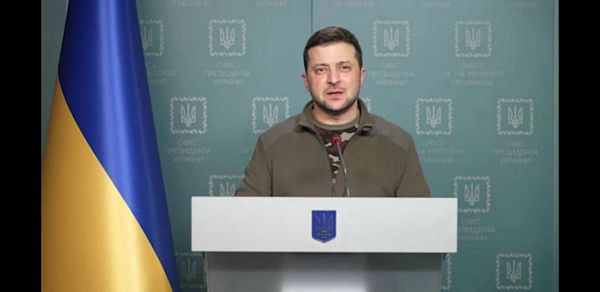In late 2021, Vladimir Putin began deploying masses of Russian troops around Ukraine. However, as of Thursday, February 24, 2022, Russia attacked Ukraine along multiple points after various diplomatic entities tried to avert such a crisis. This was the formal ignition of the Russian invasion on Ukraine. Following the initial assault, areas near the Ukraine capital Kyiv, the eastern area of Donbas, and the land area of Crimea on the Black Sea have all been homesteads for the Russian advance and assault. Despite multiple diplomatic talks between Russian leader Vladimir Putin and Ukraine President Volodymyr Zelensky, Russia continues to attack and bomb areas of Ukraine seeking to topple the country. This included the bombing of a children’s hospital in Mariupol.
How did these two nations get to this precise point of annihilation and what is Putin’s real goal in attacking Ukraine? There are a variety of sources available from the Ames Free Library and online which can help provide some unbiased context on the history that has led to the current turmoil of the territories. Some books related to the crisis and history of the nations include: Ukraine and the Art of Strategy by Lawrence Freedman and Ukraine and Russia: from Civilized Divorce to Uncivil War by Paul D’Anieri. In Freedman’s book he discusses strategy and the relationship of Putin and Ukraine in relation to the 2014 annexation of Crimea by Russia, a key piece in the current conflict. Various theoretical lenses of governmental power and conflict are used by Freedman to describe the escalation of the conflict and the aftermath prior to today’s events. D’Anieri’s text also deals with the annexation of Crimea, but rather than theory and governmental concepts, discusses a build up to the war since the collapse of the Soviet Union in 1991, another key piece in the current war. The author goes further to explain underlying issues of the region such as the disconnect of the goals of Post-Cold-War Europe. This directly correlates to a supposed intent of Putin’s current actions as he has stated “Russia could not feel ‘safe, [to] develop and exist’” because of the constant threat of Ukraine and modernization. For more brief articles related to the crisis and history of Russia, the AFL offers scholarly databases which can provide insight about the region. The Opposing Viewpoints database includes many articles on Russia and Ukraine, including the peer-reviewed piece “Ally in Waiting... Still Waiting: Ukraine keeps Russia at bay while the White House keeps Ukraine at arm's length. Kyiv deserves better” by Paul R. Gregory which discusses the current conflict and its relationship to the United States.

Ukrainian President Volodymyr Zelenskyy Speaks On Video In Kyiv
There are many continued plans by President Zelensky to rally support and hold talks to create ceasefires. However, what can be done now? Simply being aware is a great start in addressing the conflict. Another way is to donate to the various charities offering support to Ukraine and Ukrainian refugees such as UNICEF, Red Cross, Heart to Heart International, and more. Information about these organizations is readily available online along with details about how donated funds are intended to be used and sent. If you’re looking for a local organization to support Ukraine, Sunflowers for Peace is based in Boston. Though the conflict will not seem to end anytime soon, with hope, education, solidarity, and support, it will find a resolution in time.
Blog post written by California Muratore
Image source:
Ukrainian President Volodymyr Zelenskyy Speaks On Video In Kyiv [Photograph]. (2022). UPI Photo Collection. https://link.gale.com/apps/doc/HVZDEB065505476/OVIC?u=mlin_s_ames&sid=bo...